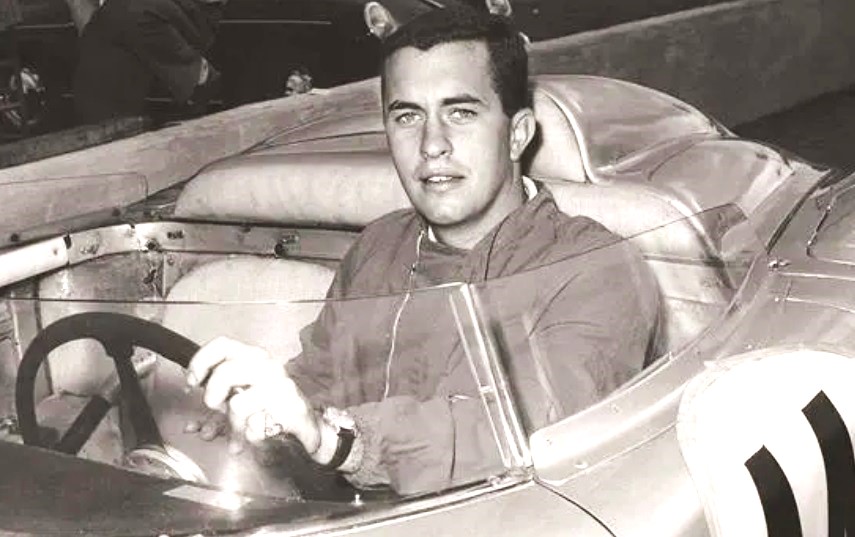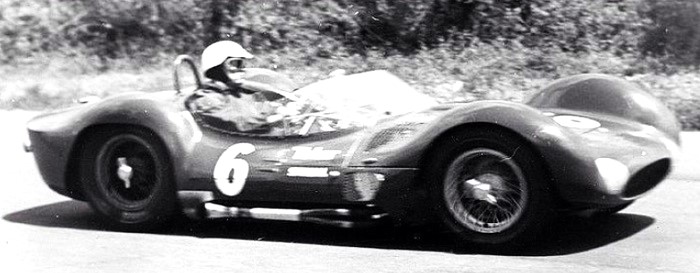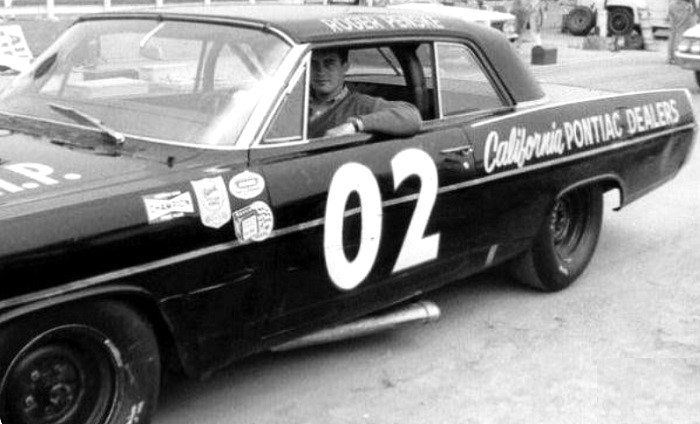ROGER SEARLE PENSKE - 02/20/1937

Penske was born in Shaker Heights, Ohio, in 1937. His father, Jay, was a successful corporate executive for a metal fabrication company and encouraged his son to become an entrepreneur. As a teenager he bought older cars, repaired them and sold them at a profit from his family's home in Cleveland, Ohio. He graduated from Shaker Heights High School in 1955 and is a 1959 graduate of Lehigh University, where he was a member of Phi Gamma Delta. Penske's first racing venture was in hill-climbing, but then ran road course racing in Porsches. Penske made his first professional racing start at the now-abandoned Marlboro Motor Raceway in Upper Marlboro, Maryland. There is arguably no person more successful in North American motorsports than Roger Penske,
and his start came with the Sports Car Club of America. Before Roger Penske Was a Billionaire, He Was a Very Successful Amateur Racer. Penske turned up at the Drivers School at Marlboro, Md., in the early spring of 1958. A tall, dark-haired, intense young man, he chose to take his instruction in a hot fuel-injected Corvette. Penske and Bob Davis, now a top mechanic, graduated from the school with the only two competition licenses given out at that session. Three weeks later Penske returned to Marlboro for the

1961 Masarati

1962 SCCA Cumberland Nationals
National races and, in the fourth event of the day, proceeded to put his schooling to good use. For 13 laps of the 20-lap event he tailed the leading Windridge-driven Corvette, only to be forced into the pits with over-heating. In January of 1961, Penske sold the RS-60 Porsche and took delivery from Modena of a Tipo 61 Maserati. It was in this season that Penske came of age as a driver and became recognized as a definite threat in any race that he entered. His biggest adversary was Walt Hansgen who, despite a late start due to European commitments, came closest to taking the D-Modified crown away from him. In fact, the record shows that just about all of Penske's 2nd-
place finishes were because of Hansgen. In 1961 he captured his second SCCA National Point Championship in a row. And, facing Europe's best in three of the North American Racing Season events, he consistently placed ahead of his amateur compatriots, with the exception of Jim Hall at the Riverside race. Closing the season at Nassau, he came in second behind Dan Gurney and won additional honors for being named "U.S. National Champion" by Competition Press. His first start in Formula 1 came at Watkins Glen. He would start 16th and finish in eighth place. His only other Formula 1 start also came at Watkins Glen (1962). This time he would start 12th and finish ninth. In 1962 Penske was named the New York Times Driver of the Year when he became the United

Laguna Seca 1963

NASCAR Riverside win 1964
States Auto Club champion, driving in Monaco with the Cooper-Climax and in Sebring, Florida, with a Cunningham. In 1963 Penske won the National Association for Stock Car Auto Racing (NASCAR) Grand National Series race. In 1964 he won five races; two of them were the Nassau Tourist Trophy, when he drove a Chaparral Corvette Grand Sport, and the Nassau Trophy, when he beat Bruce McLaren, A. J. Foyt, and Dan Gurney. The race that established Penske as one of the world's best was the 1964 Governor's Trophy race in the Bahamas, where he confronted Foyt and Wait Hansgen, beating Foyt on the last lap. A year later, he won the Riverside 250 NASCAR race on the old Riverside International Raceway road course in Southern California. It was the NASCAR Pacific Coast Late Model Division race. Penske’s race-winning car was a 1963 Pontiac that was
used for his Hall of Honor exhibit in 2019. Penske began as an SCCA driver, where he became the only driver to win the Presidents Cup three times – in 1960, 1962, and 1963. In 1961, despite winning the President’s Cup a season earlier, he took home the Kimberly Cup for most improved driver! He captured the Sports Illustrated Driver of the Year award for his work that year as well. Penske, the driver, won four consecutive SCCA National Championships from 1960 to 1963. He never ran the Indianapolis 500: he was offered a rookie test at Indianapolis with the Dean Van Lines team, but turned it down. Rookie Mario Andretti stepped in for Penske to take that test. Much to the surprise of the racing community, Penske announced in 1965 his retirement as a driver in order to devote all his time to the business component of racing. Penske purchased a Chevrolet dealership in Pennsylvania, where he had been general manager since 1963. As his first dealership grew, Penske branched into other automobile dealerships. In 1969 Penske bought a small truck leasing operation along with two racing-tire distributors. The dealerships, truck leasing operation, and racing-tire distributors formed the foundation for his future business empire. For example, the truck leasing operation Penske bought in the late 1960s was converted to Penske Truck Leasing Company. In 1970 Penske moved to the Detroit area after buying a Chevrolet dealership in the Detroit suburb of Southfield. Penske Racing debuted in 1966 at the 24 Hours of Daytona, after Penske had retired from race driving. His team first competed in the Indianapolis 500 in 1969, winning that event in 1972 with driver Mark Donohue, and their first NASCAR win was in 1973. A retired American professional auto racing driver and businessman. Penske is most known for his ownership of Team Penske, the Indianapolis Motor Speedway, IndyCar, and other auto racing-related businesses. Penske is the founder and chairman of the Penske Corporation, a holding company for his various businesses. Penske is also a Presidential Medal of Freedom recipient. To see the ownership results for Team Penske click here. Some info from Road&Track.
All Photos copyright and are property of their respective owners
